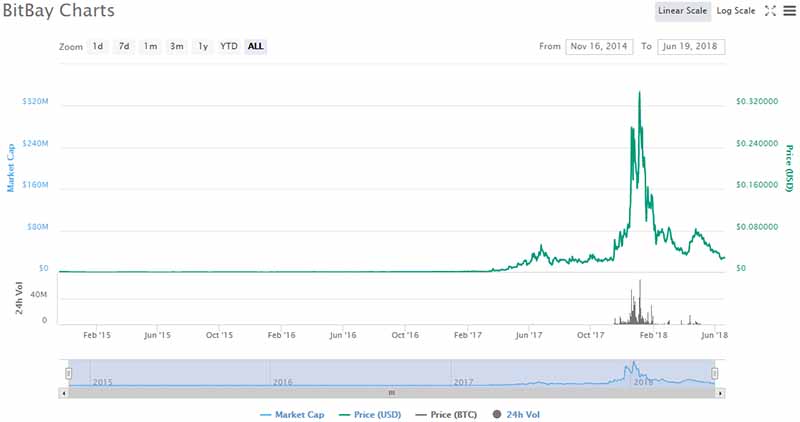2020-5-31 18:08 |
Analysts cannot evaluate Bitcoin like a stock, so sentiment plays an essential role in determining price trends. A sure shot way to improve one’s market analysis is to look at both the spot and derivative markets simultaneously.
The Rise of Crypto DerivativesBitcoin’s liquidity is predominantly derived from the spot market. This means most activity related to the cryptocurrency is the exchange of coins on exchanges like Binance or OTC desks like Cumberland.
Crypto derivatives, however, have been one of the leading growth stories of the last two years. In just a year, BTC and ETH derivatives have seen immense growth in liquidity and trading volumes.
A clear cut sign of this is BitMEX, which was previously unchallenged, losing market share to competitors as they battle for derivatives market share.
This growth stems from the arrival of hedge funds and large traders to the crypto market. Derivatives offer an efficient way for traders to increase or limit their exposure to an asset. As a result, derivatives are the preferred instrument of those who trade large sums.
In 2020, Bitcoin options have witnessed vigorous growth. However, the size of the options market is considerably smaller than futures.
Hence, the prime focus of derivatives analysis rests in the futures market.
This is important because retail investors tend to shun derivatives activity when examining sentiment. Over the last year, the liquidity from derivative markets has started to manifest into price discovery for BTC and ETH.
Using data to gauge investor sentiment in the spot and derivatives markets are two sides of the same coin.
Predicting Bitcoin’s Trend With Spot MetricsIn hindsight, the 2017 top was imminent. The sheer amount of BTC flowing into exchanges during December 2017 and January 2018 was staggering.
Over 250,000 BTC was deposited in a single day in January 2018. Considering the average deposit was roughly 50,000 BTC per day, this was an extremely bearish sign.
Source: GlassnodeMany missed this point due to bull market euphoria and a lack of accessible data at the time.
In general, a rising number of BTC deposits on exchanges is a pessimistic sign, as it signals investors intend to sell soon. Conversely, withdrawals, a proxy for buyers, also rise as they attempt to buy the sell orders on an exchange.
A lesser amount of BTC is withdrawn, however, which indicates that buyers are unable to soak up all the incoming supply from sellers.
It’s important to note that when analyzing sentiment, deposits tend to have precedence over withdrawals. This means when deposits for a particular day are higher than the average, it is a bearish signal even if withdrawals are up by a similar amount.
Fast forward to January 2019: BTC finally bottomed after a painful end to 2018. But as its price started to rebound, BTC finally began to leave exchanges after over a year.
In May 2019, BTC began flowing back to exchanges. This meant that investors who bought the dip earlier in the year started to take profits.
Source: GlassnodeAlas, a little over a month later, BTC’s price topped, but the amount of BTC held on exchanges continued to rise. In what we now know was a sign of continuation in bearish sentiment, the top in June 2019 was the start of a six-month downtrend.
All of this was made clear to those who were looking at spot market data.
Futures Market Kicks InDerivatives influence price discovery in traditional markets like stocks, gold, and bonds as liquidity tends to be higher than their corresponding spot markets.
However, since only BTC and ETH futures/options are liquid, they are the only two cryptocurrencies where derivatives have a meaningful effect.
Between June 2019 and December 2019, BTC made a series of lower highs and lower lows, which was confirmation that sellers were in control of the market.
This almost changed in February 2020 as BTC made a run for $10,500. During this rally, there was continuous selling pressure in the spot market. Futures, on the other hand, were going wild with bullish sentiment.
From the bottom in December to the top in February, BTC rallied around 65%, and open interest for futures increased by 210%. This was the first significant rally where sentiment from derivatives was able to get the better of the spot market.
Futures open interest between December 2019 and February 2020, via SkewEven the latest sell-off in BTC seems to be driven by derivatives, but it is too early to confirm this. BTC has lost roughly 12% since it crossed the $10,000 threshold two weeks ago. But BTC deposits and balance on exchanges continue to dwindle.
BTC’s sell-off this month has not come from the spot market, via SantimentAt the same time, open interest on BitMEX measured in BTC has increased, indicating that more contracts are being opened as BitMEX only accepts deposits in BTC.
BitMEX OI in BTC has moderately increased during the latest sell-off as BTC on exchanges continues to reduce, via SkewUsing Information to Your AdvantageAn individual who was only watching the Bitcoin futures market would have missed most of the signs that the short-term trend for BTC was reversing. But if they were watching the spot markets, they would have seen the signs for most rallies but missed others.
While the latter seems like a favorable scenario, keeping tabs on both markets would result in a much higher hit rate for investors.
The emergence of derivatives as a way to trade BTC should not be ignored. These instruments are essential to price discovery, and this phenomenon will only get stronger as BTC futures and options grow.
The post How to Use Spot and Derivatives Data to Analyze Bitcoin appeared first on Crypto Briefing.
Similar to Notcoin - TapSwap on Solana Airdrops In 2024
Bitcoin (BTC) на Currencies.ru
|
|






















